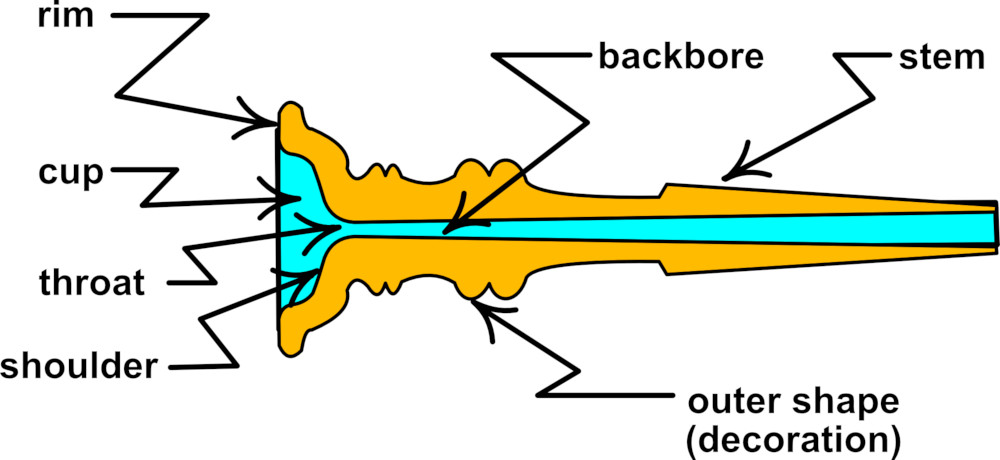It’s easy to think of ancient brass design as following that of modern instruments but that was simply not the case. Granted, there were instruments which had overall structures very much like modern instruments but there were also many which were somewhat different.
For my own purposes, I like to describe the two major types as being either open aperture instruments or closed aperture instruments. The latter type are those most like a modern instrument and have a windway whose diameter decreases towards the blowing end and here, there is a mouthpiece which features a throat. The diagram shows the various parts of a modern mouthpiece and it is the throat which creates the restriction on a restricted aperture instrument.
We can’t really say when the first restricted aperture instruments appeared but it’s quite likely that, when making a blowing hole in an animal horn, a maker would be creating a throated mouthpiece.
Many instruments from ancient times were open aperture in structure. The early bronze lurs, like that from Gullåkra in Sweden, the Tutankhamun Trumpets and some Etruscan instruments had just a simple lip cushion at their blowing end. However, given the smallish diameter of these, it seems quite likely they were played in the same way as instruments with restricted blowing devices. Other instruments which were open aperture, however, such as the Irish Horns have diameters at their blowing end in excess of 25 mm (1") and were probably played in variable tone colour mode.
